Synaptive Tracked Pointer Instruments
Tracked pointer instruments are optically tracked navigated surgical tools used to verify a location in space corresponding to an anatomical structure in an MRI image.
Tracked pointers are visible on a navigated MRI image through Synaptive’s Guide software. Anatomical structures easily visible in the MRI image are often difficult or impossible to discern on the physical world. A tracked pointer has a virtual counterpart in the Guide software and is used to pinpoint areas of interest.
The pointers are machined titanium. The tip of the larger pointer is bent titanium rod. Titanium is an ideal material for these instruments because it’s light, hard, dimensionally stable, and biocompatible.
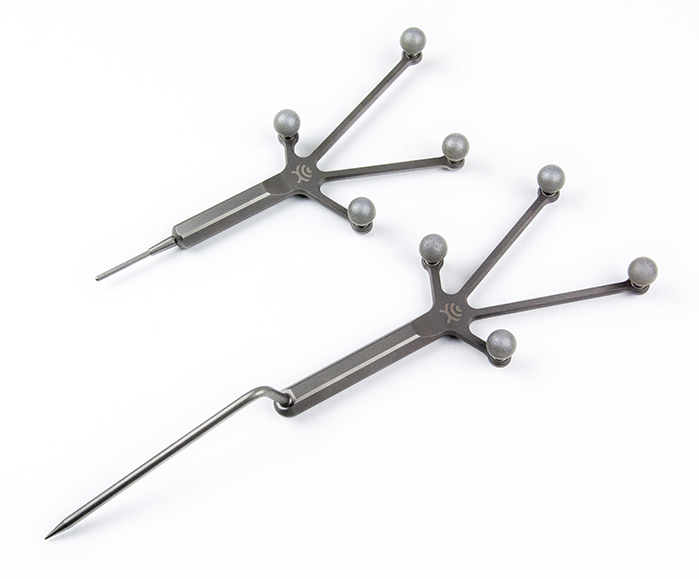
Standard Pointer and Biopsy Pointer

Standard Pointer
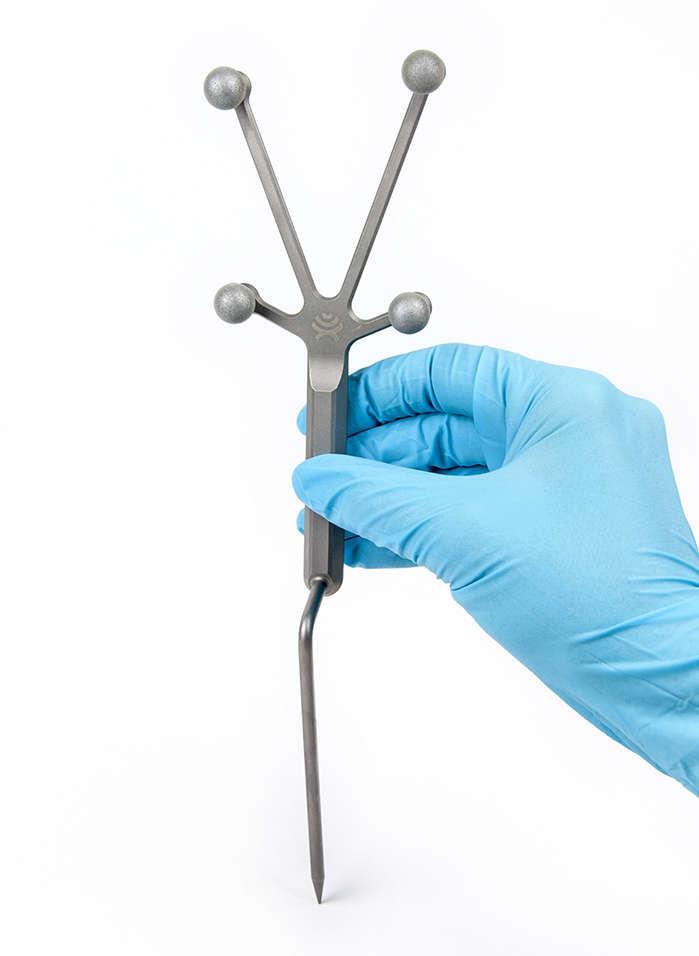
Standard Pointer

Biopsy Pointer
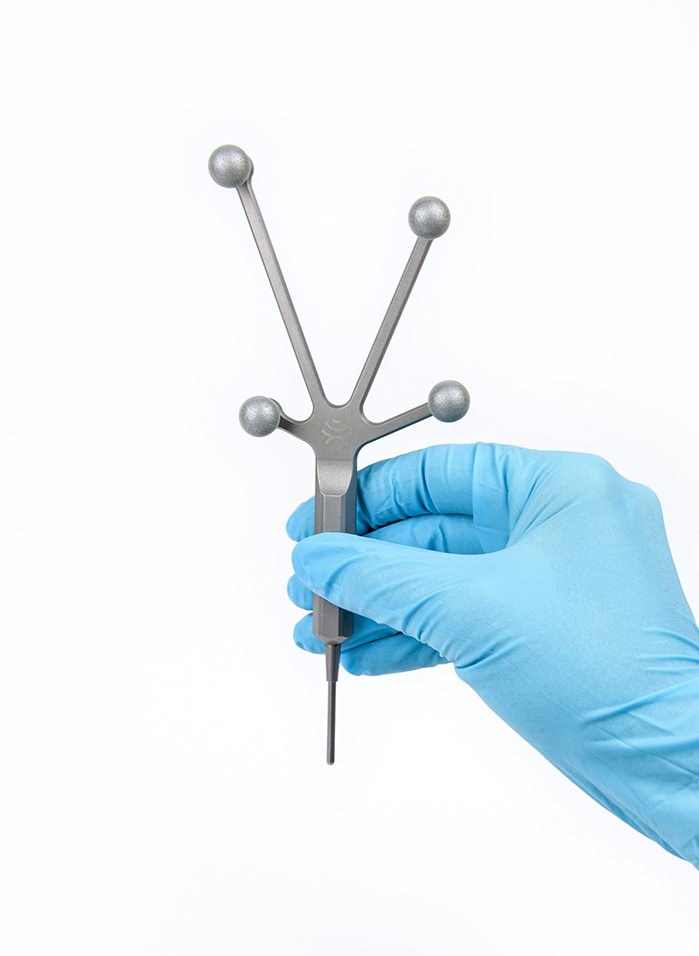
Biopsy Pointer
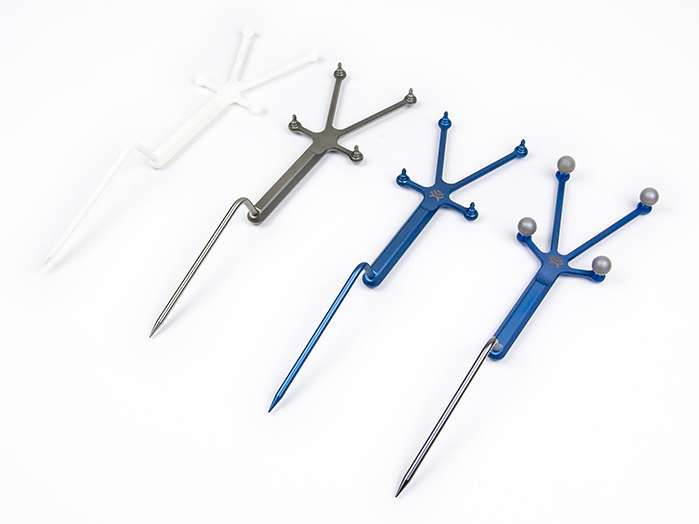
Revisions of the Standard Pointer
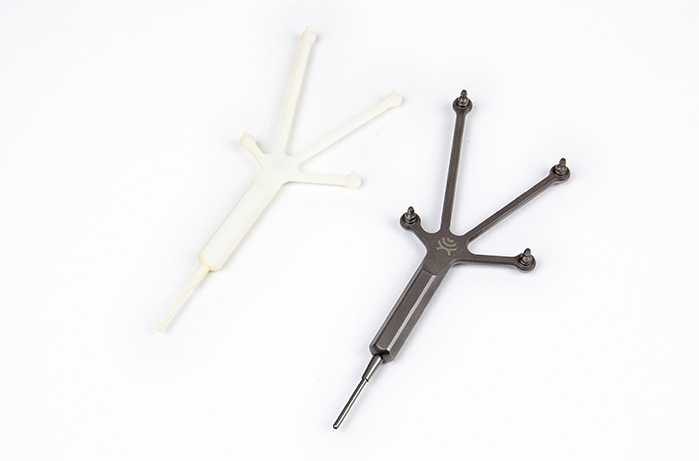
Biopsy Pointer with SLA Model
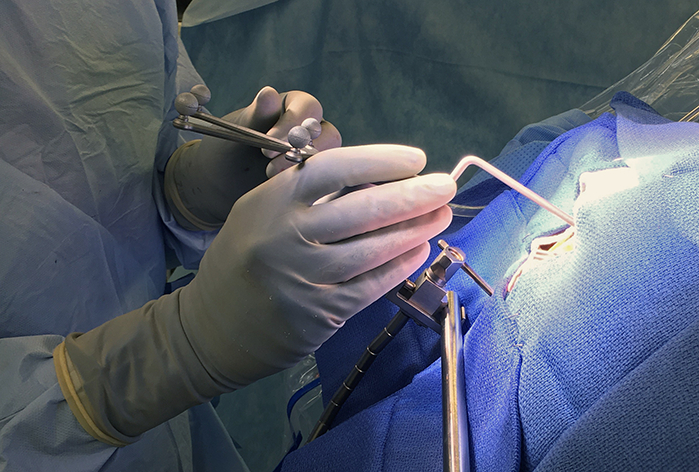
Standard Pointer in Use in the Operating Room
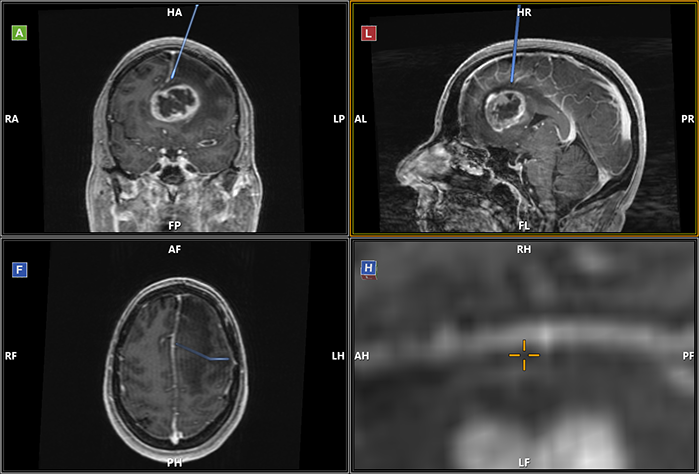
Standard Pointer in a Navigated MRI Image
What is Navigation?
Navigation in a surgical context is a system of tracking a physical instrument in space and in a computer generated image at the same time. The computer image in Synaptive’s case is an MRI scan, which is three-dimensional. The physical instrument is represented in the image as a virtual instrument and movements of the two are synchronized. After a calibration step the virtual instrument moves in the exact same way as the physical instrument.
This can be achieved in several ways (active optical tracking and electromagnetic tracking, for example) but at Synaptive it was done with passive optical tracking. An array of three or four reflective spheres, attached to an instrument, is seen by a 3D tracking camera which translates movement in the physical world to corresponding movements in the computer image. This system makes it possible to register a patient’s MRI image to the patient. Once that’s done a surgeon can see and point to anatomy (using a tracked instrument) in the MRI image and the physical world at the same time. Structures visible in the MRI image are often hard to see in the physical world. Navigation gives a surgeon the ability to see inside the body in real-time.

